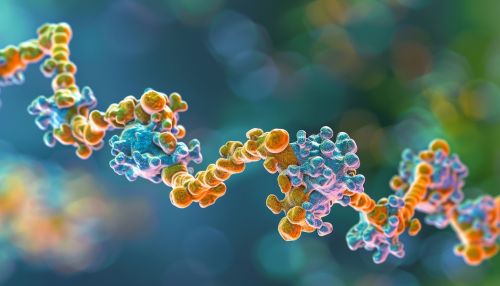NOD-like Receptors
Introduction
NOD-like receptors (NLRs) are a class of proteins that are part of the innate immune system. They are found in the cytosol of animal cells and are responsible for the recognition of pathogen-associated molecular patterns (PAMPs) and damage-associated molecular patterns (DAMPs). NLRs play a crucial role in the regulation of inflammatory responses and apoptosis, the programmed cell death.
Structure and Classification
NLRs are characterized by a tripartite domain architecture. This includes a central nucleotide-binding and oligomerization domain (NOD), a C-terminal leucine-rich repeat (LRR) domain, and an N-terminal effector-binding domain. The NOD domain is responsible for ATP binding and hydrolysis, which is essential for the activation of NLRs. The LRR domain is involved in ligand recognition, while the N-terminal domain mediates protein-protein interactions and downstream signaling.
NLRs are classified into four subfamilies based on their N-terminal domains: NLRA, NLRB, NLRC, and NLRP. The NLRA subfamily includes only one member, CIITA, which is a transactivator of MHC class II genes. The NLRB subfamily, also known as NAIP, inhibits apoptosis by binding to caspase-9. The NLRC and NLRP subfamilies include proteins that form inflammasomes, multiprotein complexes that activate inflammatory caspases.


Function and Activation
The primary function of NLRs is to detect intracellular pathogens and stress signals and initiate immune responses. They do this by recognizing PAMPs and DAMPs, which are molecular signatures that are associated with pathogens or cellular damage, respectively.
Upon ligand recognition, NLRs undergo a conformational change that allows them to oligomerize and interact with other proteins. This leads to the formation of multiprotein complexes known as inflammasomes. Inflammasomes activate caspase-1, a protease that cleaves the precursors of the pro-inflammatory cytokines interleukin-1β (IL-1β) and IL-18 into their active forms. These cytokines are then released from the cell, promoting inflammation and recruiting immune cells to the site of infection or damage.
Some NLRs, such as NLRP3, can be activated by a wide range of stimuli, including bacterial toxins, viral RNA, and crystalline substances. This broad specificity is thought to be due to the ability of NLRP3 to sense changes in cellular homeostasis, rather than recognizing specific ligands.
Role in Disease
Mutations in NLR genes have been associated with several inflammatory and autoimmune diseases. For example, mutations in NLRP3 are responsible for a group of diseases known as cryopyrin-associated periodic syndromes (CAPS), which are characterized by recurrent episodes of fever and inflammation. Similarly, mutations in NLRC4 can cause autoinflammation with infantile enterocolitis, a severe disorder characterized by inflammation of the intestine and skin.
NLRs also play a role in the pathogenesis of complex diseases such as inflammatory bowel disease, type 2 diabetes, and cancer. In these cases, the dysregulation of NLR signaling can lead to chronic inflammation and tissue damage. However, the exact mechanisms by which NLRs contribute to these diseases are still not fully understood and are the subject of ongoing research.
Therapeutic Potential
Given their role in inflammation and immune responses, NLRs are considered potential targets for therapeutic intervention. Several strategies are being explored, including the development of small molecule inhibitors that can block the activation of NLRs or their downstream signaling pathways. These inhibitors could be used to treat inflammatory diseases or to modulate immune responses in conditions such as cancer or autoimmune disorders.
In addition, the modulation of NLR activity could also be used to enhance the efficacy of vaccines. For example, NLR agonists could be used as adjuvants to boost the immune response to vaccination.
